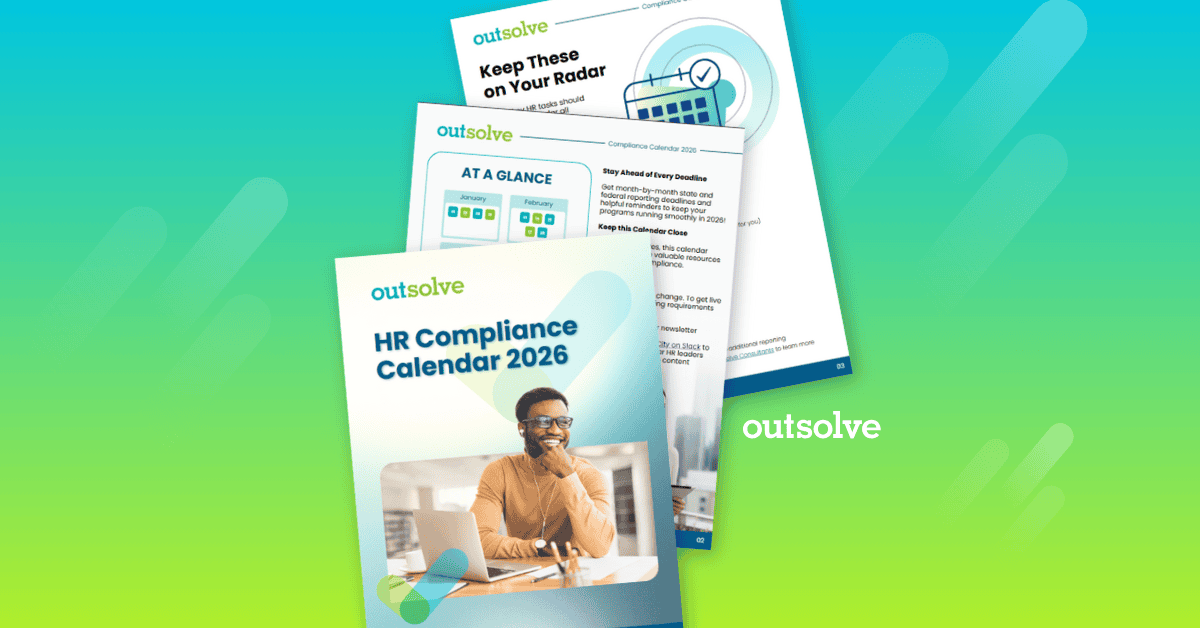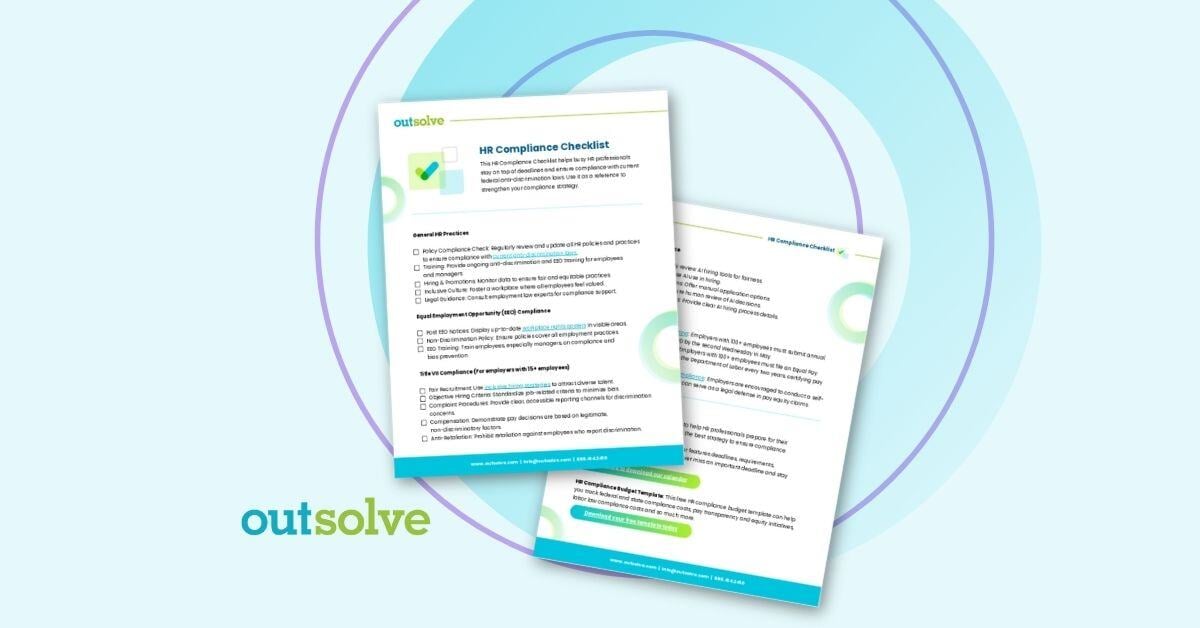6 min read
Preparing for Seasonal High-volume Hiring: Streamlining Your I-9 Process
 Angele Ruddy
:
Nov 3, 2025 12:30:41 PM
Angele Ruddy
:
Nov 3, 2025 12:30:41 PM

Seasonal surges bring more than increased foot traffic and new faces. They also bring a significant hiring spike.
Retailers, hospitality groups, construction companies, and countless others have to quickly staff up to meet seasonal demand. But while new hires may keep the registers ringing and operations running smoothly, they also introduce something less welcome: added compliance risks.
Hiring seasonal employees is a high-volume and fast-paced job, which increases vulnerability in the I-9 employment eligibility verification process. Missing signatures, late verifications, and incomplete records are among the most common errors employers face.
During seasonal surges, when managers and HR teams are onboarding dozens or even hundreds of employees within compressed timelines, the chance of mistakes multiplies. And in today’s enforcement climate, even minor I-9 compliance errors can snowball into costly fines, operational disruptions, or damage to an organization’s reputation.
That’s why preparing the I-9 process before seasonal hiring arrives is essential. By understanding the common pitfalls of high-volume hiring and implementing streamlined systems, employers can reduce risk, ensure compliance, and create a smoother onboarding experience for seasonal workers.
The Challenges of High-Volume Seasonal Hiring
Seasonal hiring happens fast. In the rush to bring on temporary or short-term employees, HR teams and managers face an overwhelming amount of administrative work — most of the hiring process is compressed into just a few weeks. This creates significant pressure on the I-9 process, where accuracy and timeliness are essential.
Three factors make high-volume hiring especially challenging:
- Large influx of temporary or seasonal staff creates administrative strain. Adding large numbers of employees in a short period can overwhelm HR teams, creating a greater risk of mistakes.
- Increased risk of mistakes on I-9 forms due to time pressure or inexperienced HR team members completing the forms. When staff are rushed or inexperienced, managers are responsible for onboarding, errors — like missing dates or incomplete fields — become more common. On top of that, managers under pressure may hesitate when faced with documents that don’t look right during verification, adding another layer of uncertainty in a busy season.
- Remote hiring challenges – not all being in the same place to complete the form by the deadlines. Seasonal staff are not always on-site, making it harder to complete the form within the required timelines. Employers often need to navigate additional complexity around remote I-9 verification.
These challenges alone can derail compliance efforts. But they’re often compounded by additional operational issues that increase risk even further.
The Process Breakdown During Seasonal Hiring
E-Verify can operate smoothly when you’re hiring a handful of people. But the process breaks down when you’re onboarding hundreds in a matter of weeks. Timelines are tight, managers are rushed, and backlogs build quickly. That’s the seasonal hiring reality.
Paper processes only make the problem worse. A stack of forms might work for a regular trickle of new hires, but in high-volume hiring, it creates a mess—slower onboarding, misplaced documents, and no easy way to pull files if auditors ask. Shifting to digital I-9 storage and forms changes the equation. Records are centralized, secure, and instantly available, which takes the panic out of compliance checks.
And then there’s training — or the lack of it. Seasonal supervisors and temporary managers often aren’t familiar with I-9 requirements. Some use outdated forms. Others miss deadlines or skip steps entirely. One mistake is easy to fix; dozens of them across multiple locations during peak hiring are not.
Paper vs. Digital: The Compliance Divide
| Paper I-9s | Digital I-9s |
|
Clutter and misplaced forms |
Centralized, secure records |
|
Slower onboarding |
Faster, cleaner onboarding |
|
Hard to retrieve during audits |
Audit-ready in minutes |
|
Risk of missed deadlines & errors |
Built-in error checking & alerts |
Why I-9 Compliance Cannot Be Overlooked
The I-9 is required for every employee, including seasonal and temporary hires. Cutting corners during high-volume hiring can have lasting consequences—and it’s not just I-9s. Employers are navigating a new reality of workforce compliance, with regulators watching hiring practices more closely across the board.
Legal Requirement for All Employees
Whether an employee works for three days or three months, the I-9 must be completed and retained for the proper period of time. Seasonal workers are no exception, and overlooking this obligation opens the door to compliance failures.
The Cost of Non-Compliance
The consequences of errors go well beyond paperwork.
- Fines: Penalties can range from $288 all the way up to $28,619 per violation.
- Audits: An inspection during peak season can drain staff time and disrupt operations.
- Reputation: Compliance failures send a clear signal to regulators and damage trust with employees and customers.
Why Consistency Matters
Compliance is not just about avoiding penalties — it’s about demonstrating accountability. A consistent, accurate I-9 process shows regulators that the organization takes its obligations seriously. It also ensures that HR teams aren’t scrambling when an audit notice arrives.
The Solution: Easy-to-Use I-9 Systems and Digital Storage
Seasonal hiring doesn’t have to be chaotic. The difference comes down to preparation and the systems you put in place. An easy-to-use I-9 platform can transform what feels like an overwhelming process and make it manageable, even during peak season.
Faster, Cleaner Onboarding
A digital I-9 system removes many of the friction points that slow employers down. New hires can complete their information quickly, managers have guided steps to reduce errors, and the whole process moves at the speed of the business. Some platforms even have trained I-9 authorized representatives to complete this for you. Modern I-9 verification platforms are designed specifically to combine speed with accuracy — critical during high-volume hiring cycles.
Real-Time Compliance Tracking
Strong systems don’t just capture forms, they check them. Built-in monitoring flags incomplete or inconsistent entries immediately, instead of letting errors go unnoticed until an inspection. Employers who want to stress-test their process can use an I-9 audit checklist to see what regulators look for during reviews.
Why Digital Storage Matters
Paper creates clutter that can easily be misplaced. More importantly, it creates risks. Digital storage centralizes every I-9 in one secure place and makes them easy to retrieve. If an audit notice arrives, records are ready in minutes, not days spent digging through filing cabinets.
And compliance is about more than speed. Digital storage also ensures you’re meeting retention requirements and keeping sensitive employee information protected.
Bringing It All Together
- Faster onboarding means seasonal staff can start work immediately.
- Built-in error checking reduces the chance of costly mistakes.
- Centralized, digital records make audits far less disruptive.
An intuitive, tech-enabled system gives HR teams confidence that, even in the busiest hiring season, compliance is under control.
Tips for Seasonal I-9 Onboarding Success
Seasonal hiring always feels urgent, but compliance gets a lot easier when the groundwork is laid ahead of time. Preparing for the influx of workers, standardizing how managers handle onboarding, and building safeguards into the process all help protect against errors when time is tight.
The most effective approaches include:
- Prepare in advance. Don’t wait for the first wave of seasonal workers to arrive. Create templates, distribute clear guidance, switch to a digital solution, and hold training sessions with managers before hiring ramps up. A half-hour of preparation now can prevent dozens of errors later—and it helps managers understand what’s at stake by reviewing penalties for Form I-9 violations.
- Standardize training. When seasonal supervisors come on board, they often learn the process informally, which creates inconsistencies from site to site. Build a short, standardized module — video, checklist, or step-by-step guide — and require it for anyone handling I-9s. Make sure it covers when and how to use an I-9 authorized representative for remote or off-site hires.
- Leverage automation. High-volume hiring means that multiple deadlines are always approaching simultaneously. Automated alerts for Section 2 completion, reverification, or E-Verify cases keep the process moving when managers are stretched thin.
- Audit yourself. Mid-season spot checks catch small issues before they become big problems. Model your review after what happens during a Form I-9 audit by ICE or DHS so you’re reviewing records the same way regulators would.
- Integrate systems. I-9 compliance doesn’t have to stand alone. Connecting it to payroll or HRIS systems streamlines data entry and reduces duplicate work, saving time and improving accuracy during peak hiring periods.
- Plan for special cases. Seasonal workforces often include returning employees. This can require slightly different handling, and confusion in the moment can cause delays. Building this scenario into your playbook makes it easier for managers to move quickly without skipping steps.
Taken together, these practices give HR teams more control during the most hectic time of year. Instead of scrambling to fix errors after the fact, employers can stay ahead of problems—and keep the focus on getting seasonal staff ready to work.
Key Takeaways for High-Volume, High-Stakes Hiring
Seasonal hiring creates a unique set of compliance challenges. The fast pace, high volume, and temporary nature of the workforce leave little room for error—and mistakes on I-9s can quickly snowball into serious risks. A few central lessons stand out:
- Seasonal hiring amplifies compliance risks if I-9 processes aren’t streamlined.
- Large onboarding surges increase the chance of errors, missed deadlines, and inconsistent practices.
- Common pain points such as E-Verify backlogs, paper-based record-keeping, and gaps in manager training can make compliance even more complicated.
- Every hire requires an I-9. Fines, audits, and reputational damage remain real consequences if compliance slips. Digital systems simplify the process, reduce mistakes, and keep records audit-ready.
- Training managers, automating reminders, and planning for special cases all make a difference during peak hiring. The same principle applies across compliance—from seasonal I-9s to pay equity reviews—where consistency and preparation protect employers.
Together, these takeaways show that compliance isn’t about increasing paperwork during the busiest time of year—it’s about setting up the right systems so that work gets done consistently, regardless of how many new employees you add.
Compliance Doesn’t Have an Off-Season
A high-volume hiring season will always bring challenges—but compliance doesn’t have to be one of them. The right preparation and digital tools make it easier to keep pace with demand while protecting your organization from risk.
With trained I-9 representatives, secure digital storage, and automated reminders, you can simplify onboarding, prevent costly errors, and stay audit-ready all year long.
Use OutSolve’s I-9 Audit Checklist to stress-test your process, identify gaps, and strengthen your compliance strategy before the next hiring surge begins.
OutSolve also offers an I-9 employment verification solution to take the confusion out of compliance. This end-to-end solution offers mobile-friendly Section 1 completion, trained I-9 authorized reps to complete Section 2, E-Verify case creation, reverification, and more.
Angele has a Bachelor of Science degree from Louisiana State University and a Masters of Business Administration. Angele has over 20 years of experience in Human Resources in various HR management roles in healthcare and hospitality, specifically in recruitment, training, employee relations and compliance. In her past roles, she assessed and anticipated HR-related needs and formulated partnerships across the HR function to deliver value-added service to management and employees that reflects the business objectives of the organization. In her role as Senior Consultant, Angele is responsible for supporting her clients in I-9 compliance and non-discrimination in employment.
Weekly OutLook
Featured Posts

New Year, New Deadlines: 2026 HR Compliance Calendar

outRageous HR: Plan Now or Pay Later
Related Posts

In-House or Outsourced I-9 Management: Which Is Best for Your Organization?
Every U.S. employer, regardless of size or industry, is required by law to confirm each new hire’s identity and verify that they are authorized to...

outRageous HR: Building a Compensation Strategy That Actually Works
If your compensation strategy is mostly “gut feeling” plus whatever you did last year… it’s time to rethink your approach.

HR Compliance Checklist: What Every HR Pro Needs to Know
During times of sweeping change to federal laws, and with new state laws being enacted, it's more important than ever for HR professionals to ensure...

